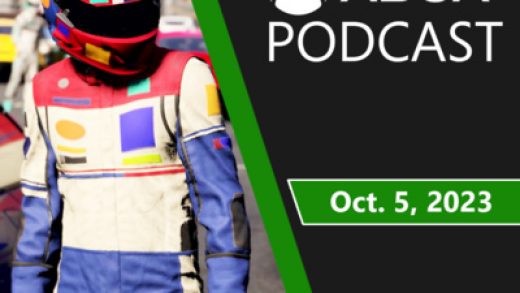
Silhouette is available now on Quest 2 and Quest Pro, featuring a novel hand tracking mechanic where shadows puppets are used to solve light-based puzzles. Here’s our full Silhouette Quest review.
Developed by Team Panoptes, we first tried the hand tracking-exclusive puzzle game Silhouette last year at Gamescom. It’s a game that largely circumvents hand-to-object interaction and instead focuses on using your hands in front of spotlights to create shadows that help you solve puzzles.
Illuminated by spotlights, these puzzles all feature the same goal: help a small shadow creature get from point A to point B, sometimes with a pitstop to collect a key along the way. You’ll use shadows casted by your hands to aid the creature in various ways. Often they need a (literal) helpful hand to get somewhere out of reach, but you can also use yours shadows to create bridges over gaps, block streams of water or move parts of the geometry to create a path forward. Some puzzles also use levers that switch the puzzle layout between different two or more states. In some puzzles, you’re also able to shape your hand into a shadow gun, which you can shoot at the environment for varying effects.

This core shadow puppet mechanic is a fantastic concept and an inventive new way to interact with puzzles, of which there are 28 in the campaign. The puzzles are scattered across a few overworld environments, which you can explore using hand gestures that move you between pre-determined teleport points. You start with a set of linear introduction puzzles, after which the game attempts to transition to something more open in nature. There’s a hub area with doors to the different overworlds that progressively unlock as you solve more puzzles.
However, each overworld is fairly linear in structure and the limited amount of puzzles means your only real option is to unlock each new area in sequence. You’re never given the option of choosing between one area or another and it’s hard to miss puzzles anyway, so all the hub world affords you is the freedom to skip one or two puzzles along the way.

The puzzles themselves are a mixed bag. Some feel inventive and engaging, while others feel confusingly easy or annoyingly fiddly. The campaign will only take you a couple of hours to complete and the difficulty never really ramps up, with the complexity staying fairly consistent throughout.
For the most part, Meta’s hand tracking technology works well here. There are occasional issues, but those are more the fault of ill-conceived design than the technology itself. There are some points where Silhouette’s puzzles are laid out in a way that gives you no choice but to position your hands in ways that are suboptimal for hand tracking performance. There were many times, for example, where I used one hand to reach for a lever placed next to the spotlight. This meant that my hand inadvertently cast shadows on the puzzle while using the lever, which often ruined my progress and forced me to reset. It’s something you learn to work around, but more careful placement of the spotlight and the lever might have avoided this.
Similarly, there are points where you’ll need to keep one hand in position and move your other hand across or in a different direction. This frequently results in hand tracking issues, either because you no longer have the first hand in camera view or because you’ve crossed hands and confused the tracking systems. Yes, the root of the issues stems from limitations of current hand tracking technology, but they’re also avoidable if a game designs around them. It’s Silhouette’s failure to consider these limitations that sees some sections become frustrating.

There’s also some issues with the responsiveness of the hand shadows and the creatures. While the creatures can walk on your hand shadows like a bridge, you’ll soon discover that moving the shadow too fast will frequently lead to the creature falling off your hand. The creature sometimes moves through your hand and often lags behind your hand’s movement, requiring you to use slow gestures instead of fast sudden ones.
Sadly, the overworld areas aren’t the most interesting environments to navigate through either. Not only does the game opt for a very plain visual style consisting of block colors and basic 3D models, but puzzles are sometimes placed quite far apart. This means it sometimes feels as though you’re spending as much time teleporting between puzzles as you are solving some of the easier ones.
The teleport speed is also incredibly slow by default (thankfully it can be sped up in the options) and you’re often left feeling as though Silhouette would have been better off opting for a setting with smaller scope and less navigation.

Silhouette Review – Final Verdict
Silhouette features a truly unique mechanic that gives players a new way to solve puzzles with hand tracking. However, everything around that mechanic feels much more mixed in execution. The overworld and navigation can be a bit tedious, while the puzzles themselves don’t always live up to the intriguing mechanic behind them.
For some, the novelty of the hand tracking shadow puppets might make Silhouette worth checking out, but if you’re looking for a polished and seamless experience, then you might want to cast your shadow elsewhere.
UploadVR recently changed its review guidelines, and this is one of our unlabeled reviews. You can read more about our review guidelines here.

